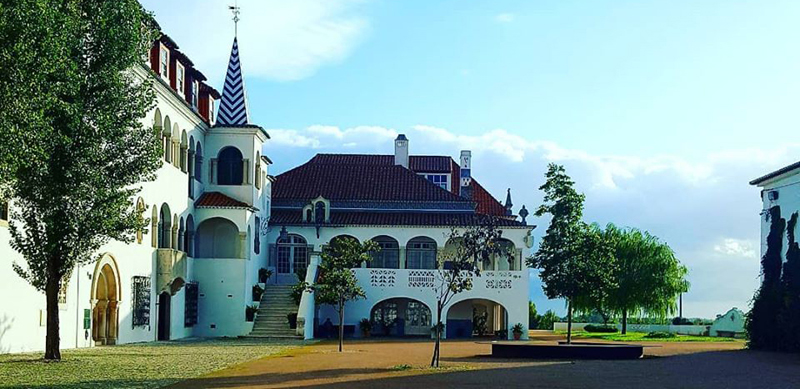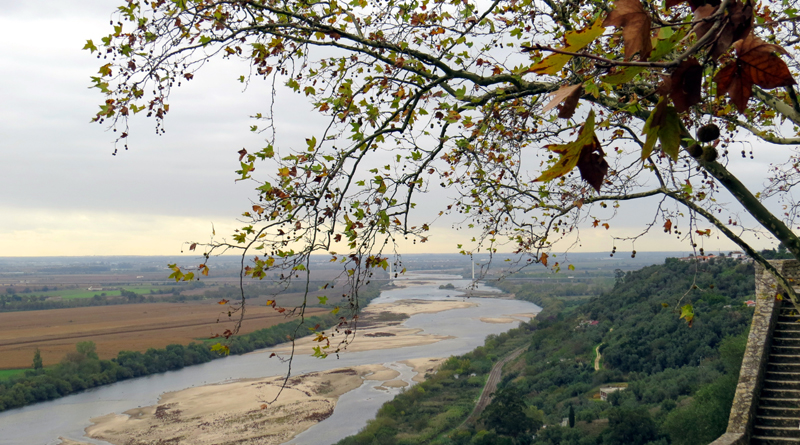ALENTEJO REGION OF PORTUGAL
The Alentejo region of Portugal is famous for its Lusitano Horses, and in particular the annual Lusitano Horse Fair held in November.
But there are plenty of other reasons to visit this lesser-known region.
Start with a visit to the Museum Jose Relvas. Relvas was a famous politician; he was the one to proclaim the republic from the balcony of the Municipal Chamber of Lisbon, on 5th October 1910 and became the 103rd Prime Minister (from 27 January to 30 March 1919) in one of the many short-lived governments of the Portuguese First Republic. He was also known for his collection of ceramics, carpets and Portuguese art – all of which can be seen within his former home. While visiting his house, marvel at the incredible over-the-top porcelain and hear why one of the rooms will never be unlocked.

Jose’s son Carlos is immortalised thanks to the saddle he designed. The Relvas saddle is a cross between an English saddle and the traditional Portuguese one. Carlos designed it to allow him to be more mobile when schooling and performing in the bullring. It was such a success that it is considered the most popular schooling saddle in Portugal today. If you visit the Golegã National Lusitano Horse Fair, you will see almost everyone riding with this saddle, and there will be plenty on sale in a range of colours from pale cream to a deep rusty orange.
On the subject of horses, take a trip to the Natural Reserve of the Sorraia Horses and admire the two-tone ponies that are believed to be the ancestor of the Lusitano. Here you can wander the grounds, take pictures of the ponies (no feeding please), and then enjoy a picnic or treat yourself to lunch in the elegant restaurant.
When it comes to food, you won’t find yourself going hungry in Alentejo. There are plenty of good restaurants to try, from the Casa dos Torricados Restaurant in Santarém with its relaxed family feel, to the ever-popular Tertulia da Quinta in Almeirim (which has its own stone soup ‘sopa da Pedka’ legend, just like the one my grandmother told me as a child), to the exclusive A Casa da Emília where you are literally eating in your hosts’ living room. If you’re visiting the Horse Fair in Golegã then book at table at Clube do Criador where you can watch the horses being exercised while you eat.
As a vegetarian/vegan you may struggle a little and find that you are offered the local speciality, Migas, at almost every meal. It is a bread-based dish, and delicious – but is short on vegetables and variety, so be prepared.
Having filled your belly with food, board a boat for a trip along the Tagus (Tejo) River. Ollem Turismo’s small boat departs from Valada, stopping first at Palhota. This is a tiny fishing village, almost deserted, with not a tourist in sight. The houses are brightly coloured yellow or blue, to match their boats (bateiros), and the front doors are high off the ground as the area is frequently flooded.
As you meander along the river see horses grazing on the banks and osprey hunting, plus terns, egrets, grey herons, cormorants and white storks. Be sure to bring your binoculars.
The second stop is Escaroupim. This is a bigger more established settlement, with permanent residences, a museum (in the old schoolhouse), a restaurant and a few tourists. In spring the area is busy with nesting herons, and all year round look out for water bottles on every corner; a rather ingenious way to stop the dogs peeing there.
If you’re ready for wine and olives, then Quinta da Lagoalva is worth popping into. Here all the wine is vegan, filtered through a physical filter rather than egg, blood or fish scales. And the olives are harvested during the day – to reduce the impact on migrating songbirds.
A walking tour of Santarem is also recommended. Make sure you take in the cool cloisters of Convent Sao Francisco and allow enough time to enjoy the Jardim Portos do Sol where you will get a wonderful, on high, view of the surrounding countryside.
Since this area is known for its horses, no trip is complete without visiting the Alter Real Stud, where you can take a guided tour around the stables. Make sure you time it right to see the running of the mares in the late afternoon. The entire herd gathers at the gates, and then the great iron doors swing open and the mares, many with bells on their necks, come running out, heading for the fields.

Alentejo may not be the region you immediately think of when booking a trip to Portugal, but in many ways that just adds to its appeal. You won’t be crushed by tourists, you’ll mingle with locals, and you’ll begin to understand just why the Lusitano horse is such an important part of the local history and culture.
FACT BOX
Visit Portugal
Visit Alentejo
Lusitano Trail Rides
Boat Tour at Tagus River
AtJuditeTour
Natural Reserve of the Sorraia Horses
Quinta da Lagoalva
www.flytap.com or call 0345 601 0932
VISIT PORTUGAL MESSAGE REGARDING COVID-19: Measures implemented in Portugal
ABOUT THE AUTHOR
Chantal Cooke is an award-winning journalist and broadcaster and co-founder of PASSION for the PLANET. Chantal is passionate about tourism being used as a force for good. You can follow her adventures on Facebook and Twitter @chantalcooke and on Instagram @Chantaldcooke

